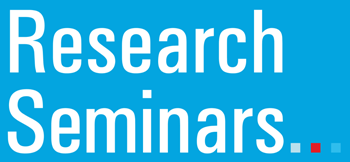
This presentation combines two goals: (1) it gives a short introduction to my first book Shades of Red in which I used computational methods to study the intellectual history of Finnish socialism at the turn of the twentieth century, and (2) it tries to challenge some widely spread “myths” about digital history I have heard during the project.
The first myth concerns the claim that the rise of digital history has led (and will increasingly lead) to a more limited range of primary sources used in research for especially the younger generations of historians prefer easily available machine-readable datasets. The counter argument would be that historians are not at the mercy of data providers but could become more active in the digitisation decisions, not only by lobbying memory organisations but also by transforming physical sources into datasets themselves. As an example, I will show how I built the corpus of handwritten newspapers which contains texts produced by ordinary working people varying from maids to agrarian and industrial workers.
The second myth claims that computational methods “de-contextualise”, i.e., remove primary sources from their original place and time. This myth is problematic if we understand “context” not as a stable thing but as a relation between the object of interest and what is constructed around that object. From that perspective, there are better and worse but no objective contexts in historical research. I argue that computational methods do not subtract anything from history but can bring one additional context to our reasoning. As an example, I will show how I read handwritten newspapers in the context of the print media. By querying the massive newspaper corpus digitised by the National Library of Finland, I was able to show that many texts published in the handwritten newspapers were taken from the print. This simple computational finding contradicts one major interpretation of Finnish socialism from the era when newspapers were not as effectively available for research as they are today.
According to the third common slogan in digital history, distant reading cannot replace close reading, but the two approaches are complementary. This truism should be elaborated further to shed more light on the relation between classical humanities scholarship and novel computational approaches. I claim that while computational approaches cannot offer simple answers to complex humanities research questions, they can guide our limited cognition towards the dominant patters in our sources, patterns that are often invisible to the naked eye but demand an historian´s interpretation. I demonstrate the idea of “picking up the right cherries” with time-series data. I show how I constructed a data-driven periodisation of Finnish socialism by first automatically identifying extreme conceptual waves in the press and then explaining their peaks and valleys. The ideal distribution of labour in historical research exploits the strengths of both humans and machines: a machine is fast, precise and tireless when connecting things inside the digital box that the human has pre-defined for it, whereas human flexibility is needed to make connections to the intellectual resources outside the box.
Wednesday, 18 May 2022
14.00 - 15.00
Online and C²DH Open Space
If you wish to join online, please send an e-mail to vanessa.napolitano@uni.lu to receive the link.


